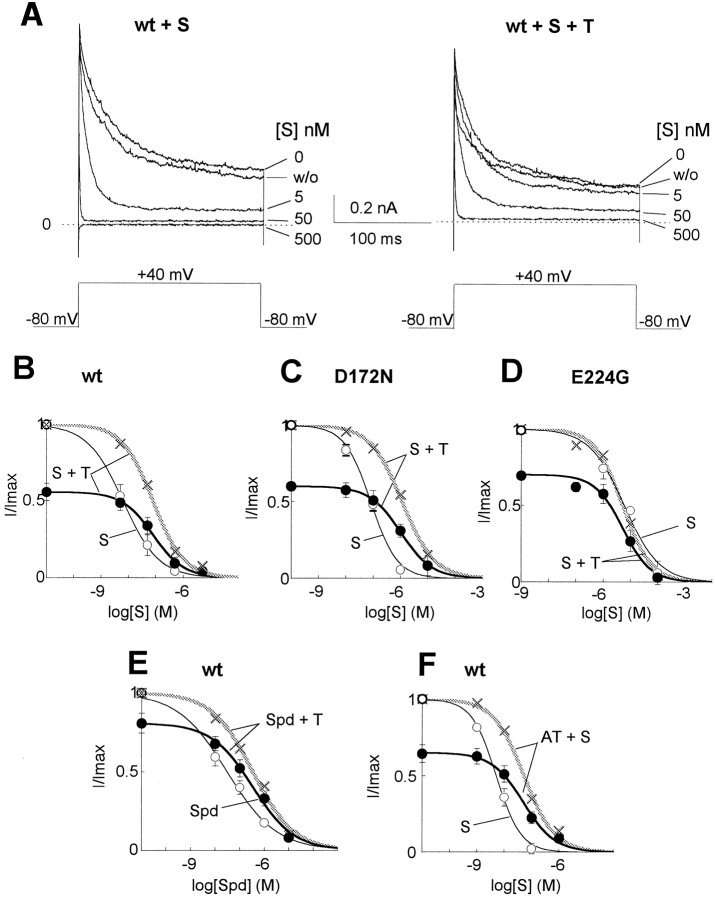Figure 2.
Competitive inhibition of polyamine block by polyamine toxins. (A) Representative traces from the same giant excised inside-out patch showing block of wild-type Kir2.1 channel by various concentrations of spermine (S) in the absence (left) or presence (right) of 30 nM philanthotoxin (T). Recording conditions and voltage-clamp protocol as in Fig. 1. (B–D) Dose–response of outward currents at +40 mV (after 200 ms) to spermine in Kir2.1 wild type (B), D172N (C), and E224G (D), in the absence (○) or presence (•) of philanthotoxin. The gray crosses show the normalized data for philanthoxin + spermine, to better illustrate the shift in K 0.5. The superimposed curves are least-squares fits to the Hill equation. Hill coefficients ranged from 0.7 to 0.9. (E) Dose–response curves for wild-type Kir2.1 currents to spermidine (Spd) in the absence (○) and presence (•, gray crosses, normalized) of 30 nM philanthoxin. Hill coefficients ranged from 0.42 to 0.51. (F) Dose–response curve of wild-type Kir2.1 currents at +40 mV to spermine in the absence (○) or presence (•, gray crosses, normalized) of 10 nM argiotoxin (AT). Hill coefficients ranged from 0.77 to 0.99. Data points in B–F represent the mean ± SEM for n = 4–6 patches.

